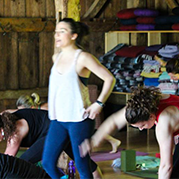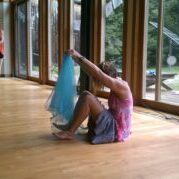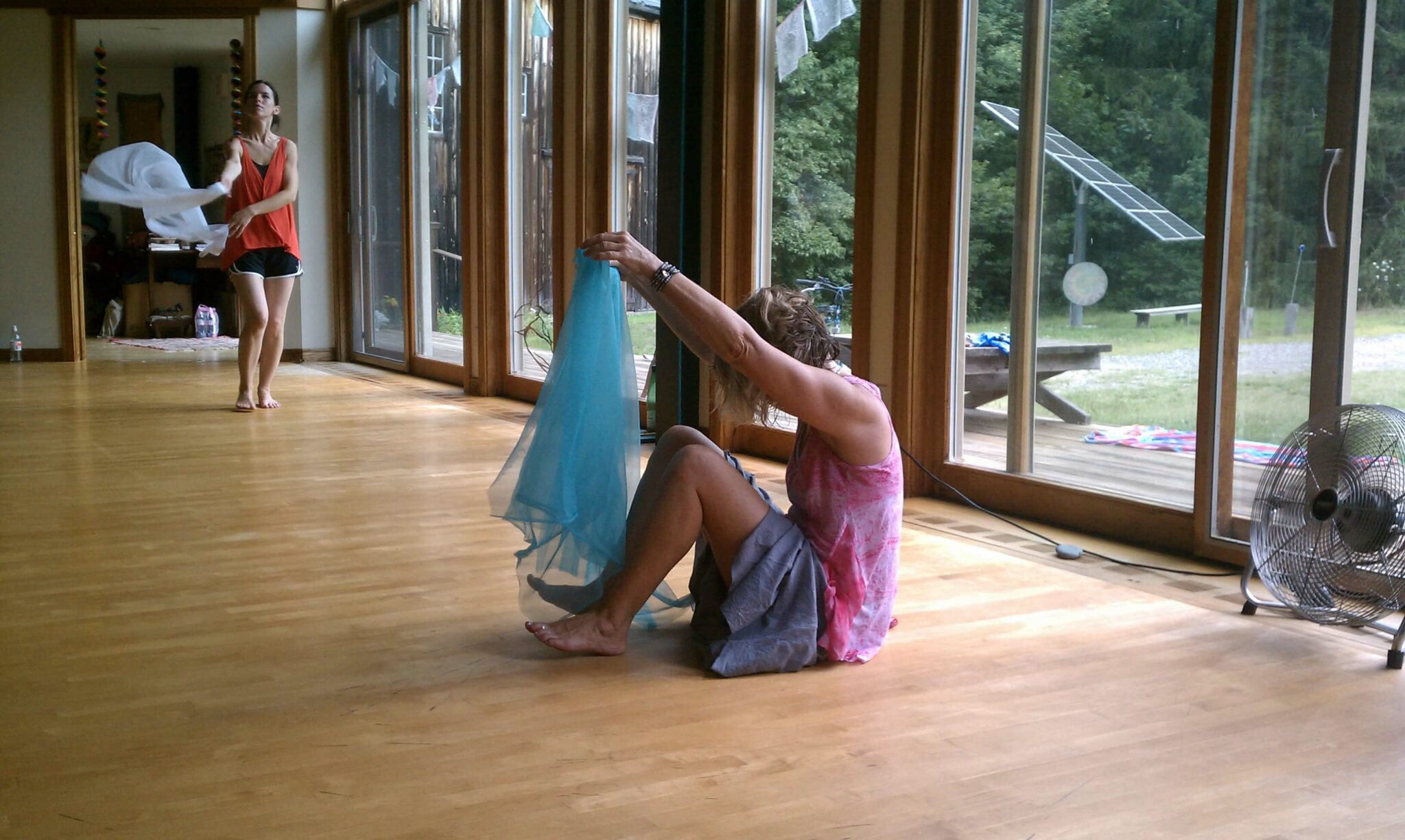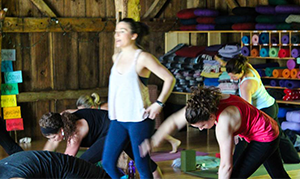
Kripalu Yoga
What is Kripalu Yoga?
I had practiced many styles of yoga before finding the Kripalu Yoga center in Western MA. I felt drawn to Kripalu because of its underlying philosophy of self-compassion. In my experience the Kripalu yoga tradition is inclusive of all body-types, abilities, life-stories and world-views. I believe that it is within this self-compassion and in a community that fosters inclusiveness and not competition there is great potential for personal growth and healing. It is my intention as a yoga instructor to hold space for my students to safely go within their bodies, minds and hearts to reflect, heal and grow. www.kripalu.org
Gentle Kripalu Yoga Class
Thursday Evenings 7 - 8 PM

Journey Dance
The Journey Dance structure allows each participant to travel through a piece of personal internal and metaphorical work. The Structure is thematic and within each segment there is an invitation for personal expression and intuitive choice. As a group we weave; connecting at times, traveling alone and coming back again to the circle. I experience the process as fun, freeing, cleansing and sacred. Come join!
www.journeydance.com

Meditation
Satsang: Sitting in truth.
“Meditation is the practice of concentrating the mind in such a way that our awareness develops and we experience the natural wholeness and stillness that we are.”
~ Stephen Levine
Meditation can be practiced alone or in the beautiful energy of a group setting. There are many structured forms of meditation that I enjoy guiding such as: Yoga Nidra, Metta, Vipassana, Kriya, and Pranayama. I feel the simplest form of seated meditation, however, with the natural sensations of the body and breath as the only anchor to be form of meditation I believe to be the most self-empowering. This simple form allows a practitioner to take this tool anywhere and lessens his dependence on external crutches or formulas. I feel the simple seated meditation alone or in a group to be the most empowering for the individual and is the one I facilitate and personally practice most often myself.

Dance Therapy
Dance Therapy is a very deep form of psychotherapy. It accesses unconscious material very quickly and therefore should be handled with knowledge, experience, and care. I believe boundary-work is essential to healing and nothing is more obvious than our physical boundaries and those that exist in others and the physical world around us. Therefore Dance Therapy is a rich metaphor for repairing damage in the area of crossed and broken boundaries. As boundaries are essential to the safety and care of this work it is my personal belief that any practitioner who uses Dance Therapy techniques should have obtained the necessary education and mental health certifications, such as those laid out by The American Dance Therapy Association in order to ensure the safety and care needed for this modality to be productive and move a client safely forward in their treatment.
” Dance therapy is focused on movement behavior as it emerges in the therapeutic relationship. Expressive, communicative, and adaptive behaviors are all considered for group and individual treatment. Body movement, as the core component of dance, simultaneously provides the means of assessment and the mode of intervention for dance/movement therapy. Is practiced in mental health, rehabilitation, medical, educational and forensic settings, and in nursing homes, day care centers, disease prevention, health promotion programs and in private practice. Is effective for individuals with developmental, medical, social, physical and psychological impairments. Is used with people of all ages, races and ethnic backgrounds in individual, couples, family and group therapy formats.” www.adta.org
“Rebecca has a natural gift for establishing rapport. Creating trust is an important part of working with the arts in therapy and in any field with human interaction at its core. Rebecca gains trust with her compassion and respect for diverse perspectives. Adolescents, with their changing body image, are typically the hardest to engage—add to that a history of hospitalization, with issues such as anxiety, depression, avoidant or disruptive behaviors. Rebecca works through resistance with humor, receptivity and attention to creating activities that invite participation. She honors the diversity of cultures, learning styles, themes and interests that a group brings. This body-oriented focus carries over into her work with adults, as well.”
Nancy Jo Cardillo A.D.T.R. LMHC, Professor Lesley Universty




